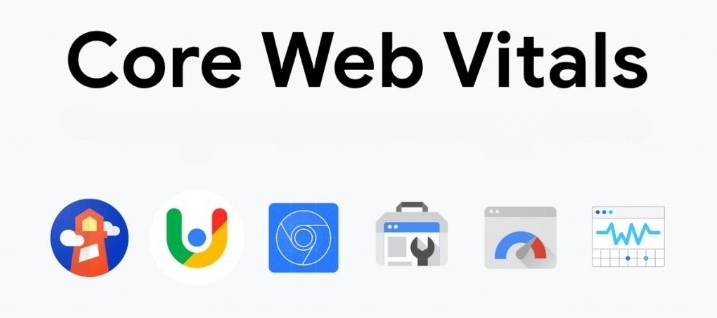SEO Strategy is a bit complex to create because of algorithm updates and SEO trends that evolve several times a year. This consistent fluidity in search trends makes it more difficult to execute optimization across your website and maintain a strong ranking. Even if you are an SEO expert, you cannot keep track of all the changes. However, if you know how to beat algorithm updates through the best SEO techniques, you will always be a head above all competitors. You only need to incorporate SEO best practices into your SEO strategy plan to stay on the first page of the SERPs.
If you are a beginner, let us brief you on some significantly important SEO strategies for 2022 that will help keep your website traffic and keyword rankings trending upward this year.
• Recognize the core web vitals of your website:
If Core Web Vitals are new terminology for you, let us break it down for you. Core web vitals contain a group of metrics that calculate responsiveness, speed, and visual stability. You will find three metrics in core web vitals, i.e., first input display (FID), largest contentful paint (LCP), and cumulative layout shift (CLS). The FID determines the responsiveness of a page that should be no more than 100 ms. The LCP calculates visual stability, and it should be less than 1. Lastly, LCP measures the loading speed of a page, which should be 2.5 seconds or more.
You must be thinking about how you can measure these vitals. Don’t worry. There are various tools available to calculate core web vitals in one go. Some of them include Lighthouse, Google Search Console, Chrome DevTool, PageSpeed Insights, Chrome UX Report, and more. You need to check all pages on any of these tools and improve the score if any deficit appears in the report.

• Get featured snippets:
You may see the featured snippets at the top of the search engine result page in a box. Your content on your web page can also get featured there if you incorporate the following strategies into your SEO plan:
• Use long-tail keywords in your content because longer words are more likely to get featured snippets. The long-tail keyword should be between 5 and 10 words.
• Consider using question words in the content, such as How, Why, Can, Do, Where, etc. Most users search for keywords in the form of a question, so there will be a higher chance of earning a snippet.
• Follow the suitable snippet formats, such as paragraph, table, listing, or video. You need to write the content wisely because Google prefers displaying content distinctly to make the searcher get the answer quickly. The content for the snippet should be precise, short, and to the point.

• Keyword Clustering:
Previously, many SEO experts considered optimizing pages and blogs for only one focused keyword. However, this strategy has become outdated now. Now, Google ranks the pages for multiple relevant keywords. This technique is known as “keyword clustering.” It consists of finding the relevant keyword with related search intent to target those searches in clusters. Let us provide you with an easy SEO strategy example. If you want to create a keyword cluster for the benefits of eucalyptus oil, you will need to use various related words in the blog. For instance, eucalyptus oil benefits for COVID, how to use eucalyptus oil, eucalyptus oil in the bath, eucalyptus oil side effects, eucalyptus oil for skin, eucalyptus oil for hair, etc.

• Upload New and Update Old Content:
Do you know more than 4.4 million blogs are published daily? So, how do you think that your old content can stay in the competition in a long run? You need to refresh the previously updated content occasionally or upload new blogs regularly to give the most relevant and updated information. Google also prefers indexing the pages where you publish or update content regularly. When you are writing SEO-friendly content, always focus on a page title, headings, image alt text, and targeting keywords to ensure content optimization to the fullest.

• Google passage ranking:
A couple of years back, Google introduced passage ranking, in which any paragraph or passage on a page can be ranked individually, even if the blog post is not completely about the searched topic. When it comes to SEO content strategy, this approach helps you achieve a position on the SERP. To achieve a high position on Google, you need to create easy-to-read blogs with a user-friendly experience. Every section of the blog should be clear and focused, with defined sub-headings. It will seem easy for Google and viewers to access any specific topic or content in one go.

• EAT Principle:
To design an effective SEO strategy for 2022, you need to focus on the EAT principle that denotes Expertise, Authority, and Trustworthiness. It actually tells you your site’s reputation on the internet. You can improve your EAT results by simply incorporating the following steps.
• Get good reviews of customers on different reputable sites, such as Google, Amazon, etc.
• Create and earn quality links from reputable sites in your industry.
• Stay active in public forums.
• Show EAT’s accomplishments on your site via reviews, testimonials, feedback, case studies, etc.

• In-depth content:
Google mostly likes the longer, well-sourced, and in-depth content because the longer blogs seem well-researched, informative, and comprehensive. It signals the good EAT value that denotes the brand’s quality and reputation. Google keeps changing and improving the algorithm to identify quality content for better ranking. This SEO marketing strategy works effectively in showing Google the quality of your content.

No matter how many updates occur in the Google Algorithm, the core principle remains the same. So, you need to follow a basic SEO strategy in digital marketing. It includes content quality, on-page SEO, technical parameters, industry-specific approach, backlinking, democratization of search, user experience, and more. When you create an effective SEO strategy around these basic steps, you will get positive results within the minimum timespan. So, what are you waiting for? Use these practices in your SEO plan 2022 and maintain your web page’s presence on the first page of SERPs.

















